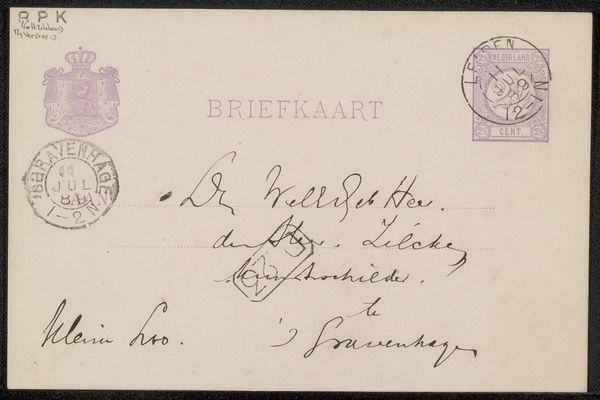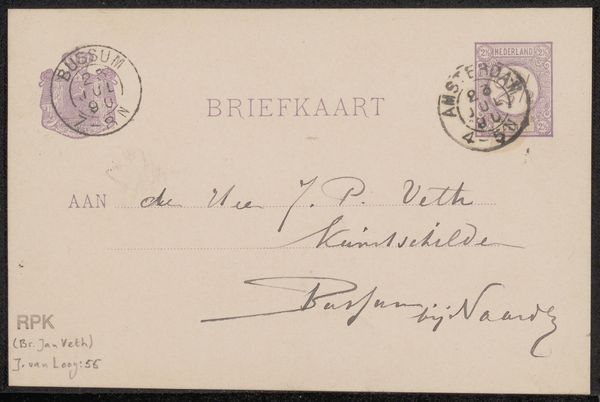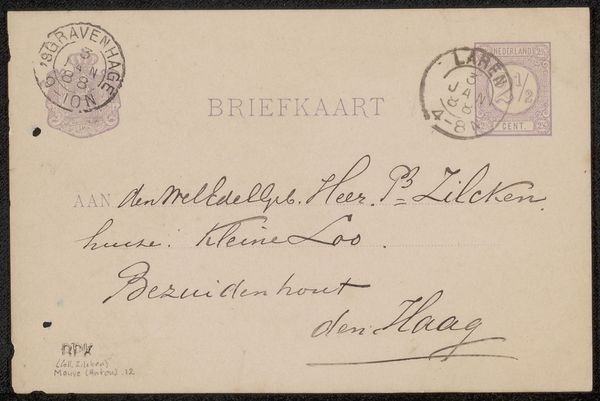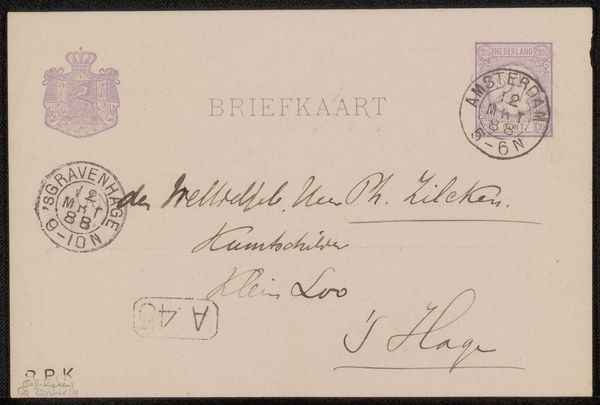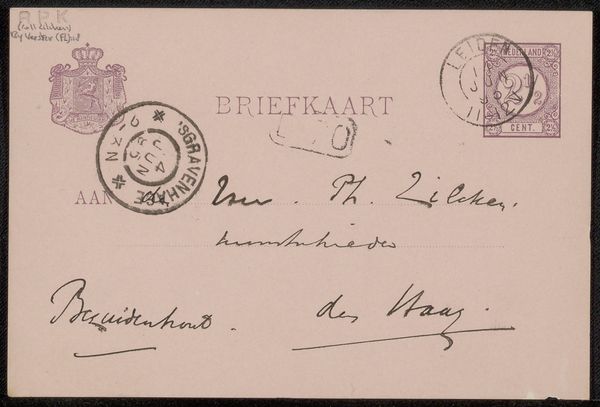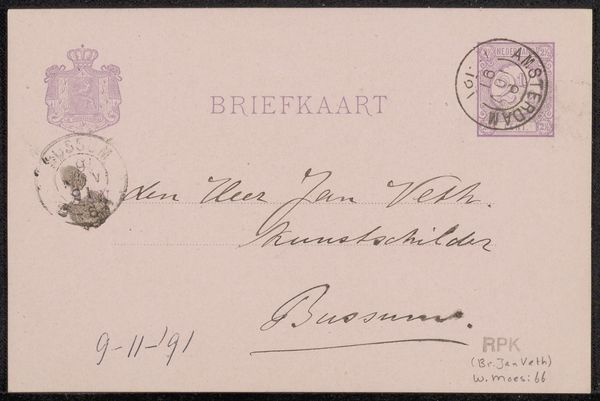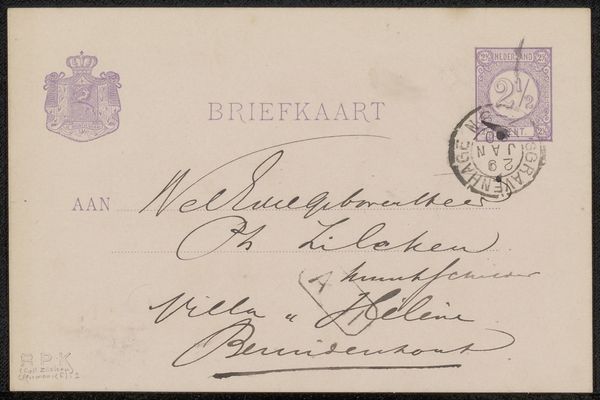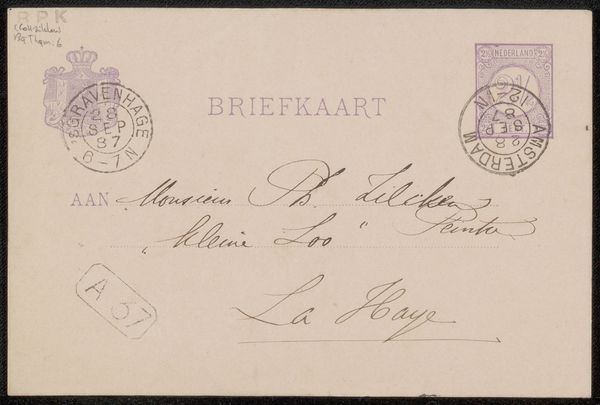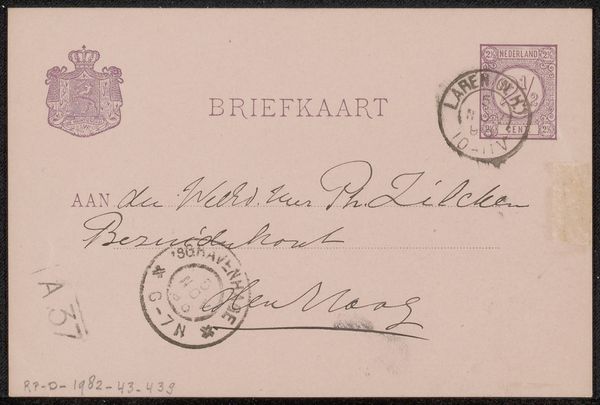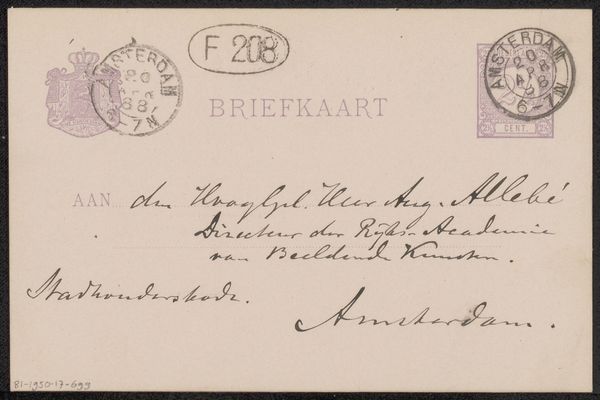
drawing, graphic-art, paper, ink, pen
#
drawing
#
graphic-art
#
comic strip sketch
#
pen sketch
#
old engraving style
#
hand drawn type
#
paper
#
personal sketchbook
#
ink
#
ink drawing experimentation
#
pen-ink sketch
#
pen work
#
sketchbook drawing
#
pen
#
sketchbook art
#
calligraphy
Copyright: Rijks Museum: Open Domain
Curator: We're looking at a work by Jan Zürcher, a "Briefkaart aan Philip Zilcken," possibly from 1888, done in pen and ink. It seems to be a preliminary study or draft. What’s your immediate take on this piece? Editor: Immediately, I’m struck by its flatness. The crisp lines of the stamp contrast sharply with the fluid, cursive script. It’s an exercise in tonal variation within a monochromatic palette, isn't it? Curator: It's fascinating because correspondence from this period served multiple roles. On one level, it’s merely a communication—the postal stamps indicating its journey. But considering the address is another artist, Zilcken, we enter into a dialogue about artistic community. The casualness implies a degree of familiarity, of shared intellectual or creative pursuits. Editor: The composition is so simple yet satisfying; the placement of text and stamp create this visual weight on opposing ends. How would the intended viewer navigate its contents, decode its intended recipient? Curator: Precisely. Think about artistic circles at the time. Correspondence fostered dialogues outside of formal exhibitions, especially critical for those whose identities or artistic approaches were marginalized by dominant institutions. Letters provided space for informal exchange, validating nascent artistic movements outside the established canon. It democratizes access to discussion that could otherwise only be had via official publications. Editor: It’s this deliberate arrangement of minimal forms to denote context! A subtle, coded exchange of creative values, wouldn't you agree? Curator: I concur entirely. It speaks of the importance of maintaining dialogues amongst contemporaries, forming collective spaces of resistance or exploration. Editor: Looking closely, I appreciate how each mark serves a specific function within the whole. Every choice, every detail contributes to the communicative purpose. It becomes an exercise in distilling communication to its most basic form. Curator: Indeed. Examining this simple postcard, we witness how it performed as a site for maintaining artistic communities and transmitting values outside traditional venues. Editor: Thank you. The dialogue has shifted my view of this postcard to reflect those values.
Comments
No comments
Be the first to comment and join the conversation on the ultimate creative platform.
